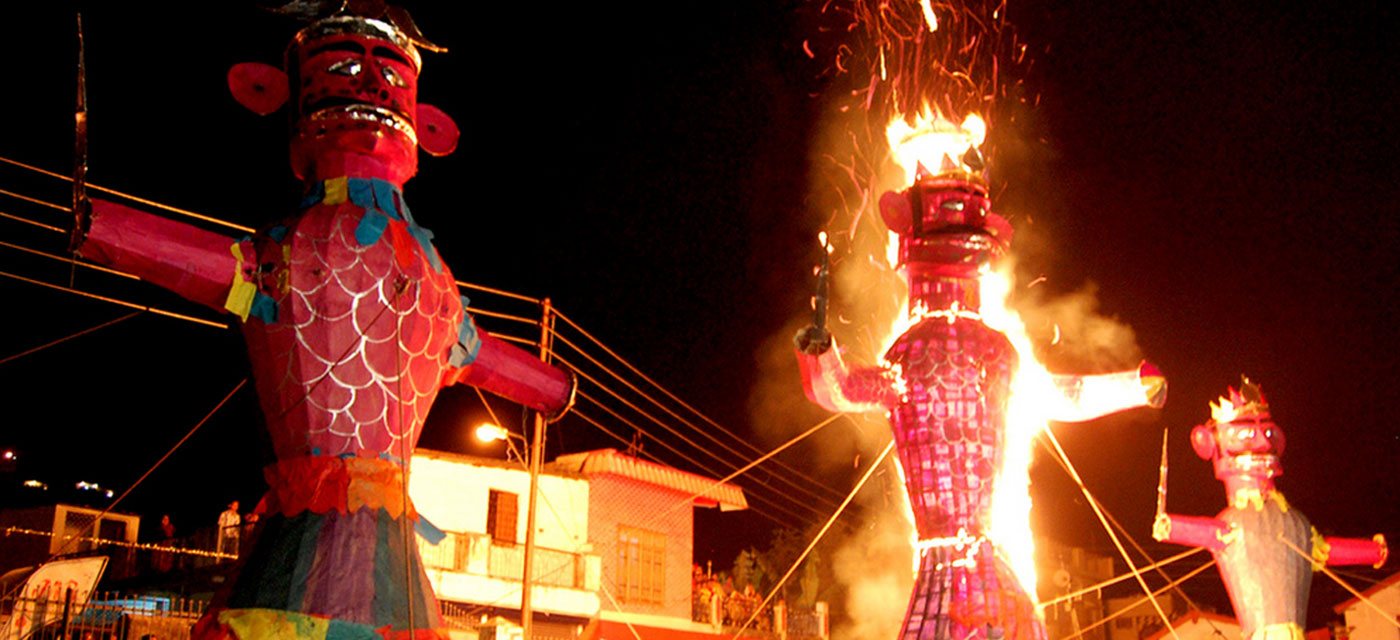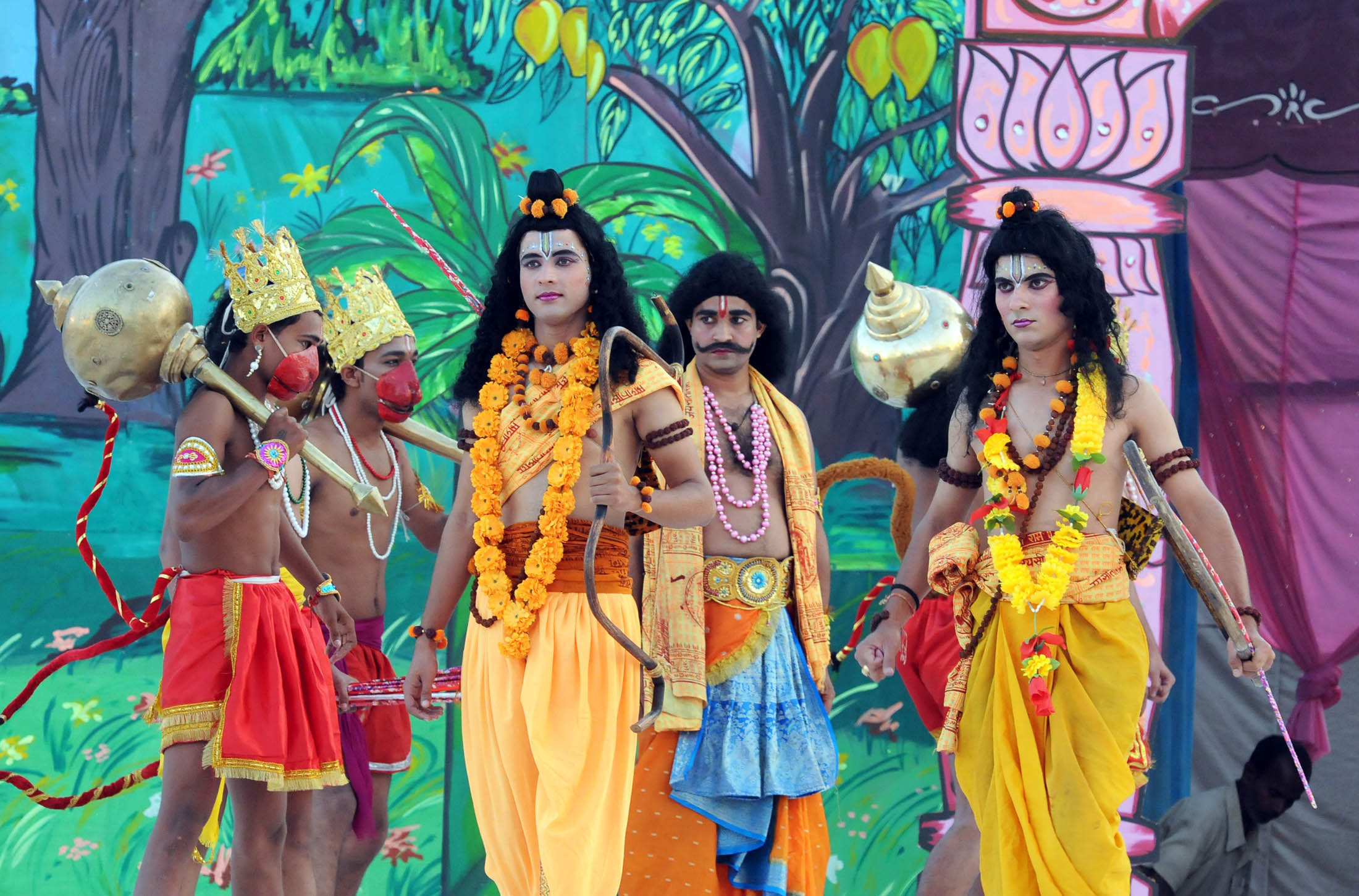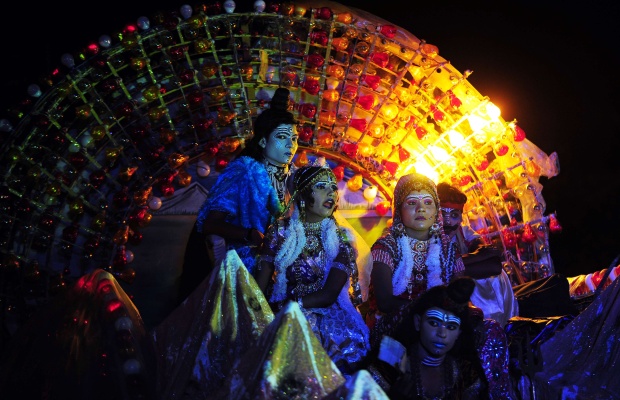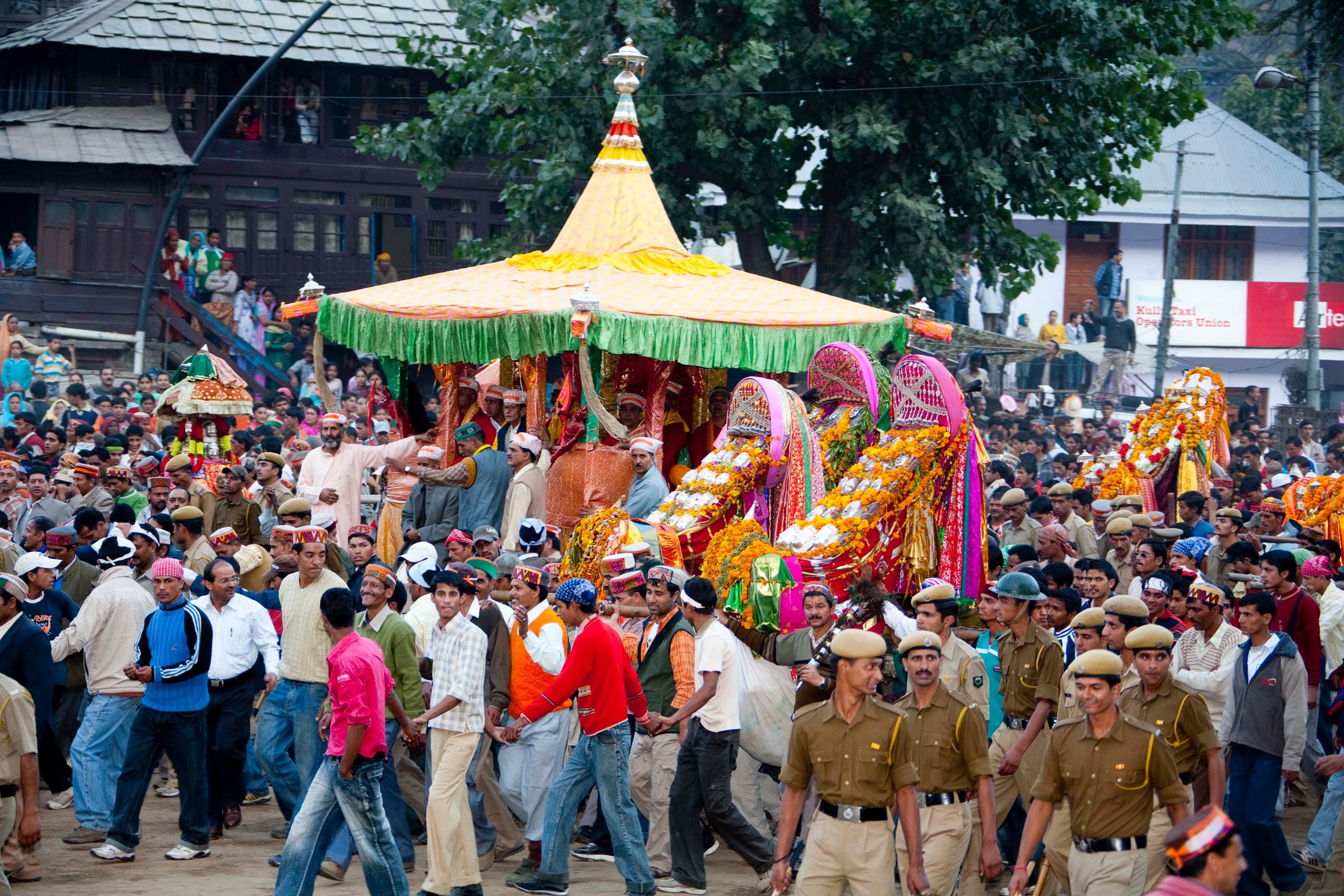India is a land of festivals, and one of the most eagerly awaited is Dussehra in which people of different faiths participate. It is celebrated with zest and religious fervour as it also marks the beginning of the winter season after the long period of summer.
The festival of Dussehra is celebrated to mark the victory of Ram over the demon king Ravana, and the rescue of his wife Sita.
Though it is celebrated in the entire country but it has special significance in north India where gigantic effigies of the ten-headed Ravana and his brothers are set aflame amidst bursting of crackers. Large processions are taken out on the streets featuring episodes of Ramayana.
Dussehra means the Tenth Day, being the 10th day of the bright half of Ashvin, month of Hindu calendar. This day is also known as Vijayadashmi, or the Victory Tenth, because of the victory of Ram over Ravana.
Taking out brilliant processions
In various parts of the country, brilliantly decorated tableaux and processions depicting various episodes from Ram's life are taken out. This festival is not restricted to people from one religion as people from different faiths come on the road to witness the tableaux and processions.
On the final tenth day, or the Vijayadasami, colossal effigies of Ravana, his brother Kumbhkarna and son Meghnad are placed in vast open spaces. Actors dressed as Ram, his consort Sita, and brother Lakshman arrive and shoot arrows of fire at these effigies, which are stuffed with firecrackers. The result is a deafening blast, and an explosion of sound and light enhanced by the shouts of merriment and triumph of the spectators.
There is also staging of Ram Lila or the dramatic depiction of episodes from the lives of Ram, Sita, and Lakshman during the Dussehra period. All the regions across the country have evolved their own distinctive style, and performances at different places are done in the local language.
Rituals
As Dussehra is preceded by the Navratras or the nine days of worshipping Goddess Durga, some rituals related to the Goddess are also carried out that day. The rituals of Durga Puja involve the usual puja of goddess Durga along with Lord Ram.
Legends
People believe that on the day of Dussehra in Satyug, Ram (the eighth incarnation of Lord Vishnu), killed the great demon and king of Lanka, Ravan, who had abducted Ram's wife Sita. Ram, along, with his brother Lakshman, follower Hanuman, and an army of monkeys fought a great battle for ten days to rescue his wife Sita.
Staging of Ramleela
In north India, festival of Dussehra has special significance. There is the staging of Ram Lila that consist of plays, recitations and music across different cities dotting northern India that recall the life of the legendary hero, Lord Ram, alongwith a nine-day worshipping ceremony involving Goddess Durga.
On the tenth day, elaborate processions lead to the Ram Lila grounds where immense cracker-stuffed effigies of the demon Ravana and his brother and son are set alight and explode to the cheers of thousands of spectators.
Though Dussehra is celebrated uniformly across the nation, but the festival has assumed different dimensions at Allahabad in Uttar Pradesh, Kullu in Himachal Pradesh and Mysore of Karnataka.
There is considerable excitement in the city of Allahabad as Dussehra is celebrated for ten days at this place. Patharchatti and Pajawa are the two old Ramleela Committees of the city which take unique tableaux (called ‘chowki’ in local parlance) highlighting episodes from the Ramayana. The ‘actors’ mounted on the moveable tableaux stage different episodes from Ramayana and other mythologies. Sometimes, they also perform plays on current issues facing the country. These processions are taken out in the areas of Chowk, Zero Road, Johnsintonganj, Allahpur, Clock Tower, Civil Lines and other areas.
The festival of Dussehra is celebrated differently in Kullu, a small town in Himachal Pradesh. Since the times of Maharaja Ranjit Singh, Dussehra celebrations here begin three days after they do in the rest of India. On the first day of the festival, the idol of Raghunathji is mounted on a splendid rath (chariot), and pulled from its permanent place in the Dholpur meadow to another part of the ground.
On the second day, a Devta Durbar (Council of Gods) is held, with Raghunathji presiding.
On the final day of the festival, the chariot of Raghunathji is drawn to the banks of the river Beas. Here, a pile of wood and grass is set on fire to symbolise the burning of Lanka and five animals – a crab, a cock, a fish, a buffalo and a male goat are sacrificed. The people then immerse themselves in revelry. Lugri, the traditional Kullu drink, flows by the gallon.
In Mysore, the festival is celebrated with pomp and pageantry reminiscent of medieval times. In Bengal and other parts of eastern India, Dussehra is celebrated as Durga Puja. Devotees wear new clothes and celebrate with music, dance and drama. On the last day, images of the warrior goddess are taken out in procession and immersed in a river or the sea.






